To the extent possible, maintain the existing setback patterns within the immediate vicinity of the building. Avoid locating a building far in front of or far behind the average setback lines of the four to five properties located on either side of the proposed development. Respect the side yard and rear yard setback lines prevalent in the area.
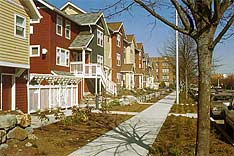
The buildings in this Tacoma, Washington development are set back slightly relative to neighboring buildings in order to accommodate grade changes and make room for plants along the sidewalk.
(Matsusaka Townhomes)
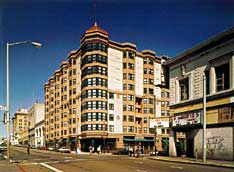
This San Francisco complex clearly maintains the existing zero setback pattern of its neighbors and, in the process, reinforces the streets on which it is located.
(210 Turk and 111 Jones)
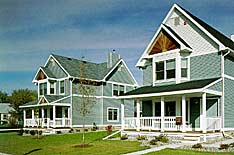
Front, side and rear yard setbacks prevalent in the area were respected and reinforced in this St. Paul, Minnesota single-family development.
(Lyton Park Place)
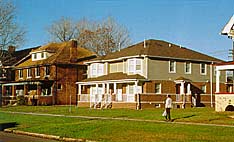
This Detroit, Michigan quadraplex maintains the front and side yard setback patterns of its neighbors, which happen to be single-family homes.
(Field Street)
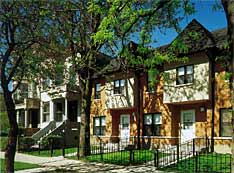
This Chicago infill development clearly respects and reinforces the front yard setbacks prevalent in its neighborhood.
(West Town II)
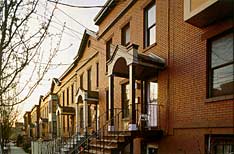
The setbacks on this Albany, New York street of new homes are the same as those found for the row houses in the surrounding neighborhood.
(Catherine Street)
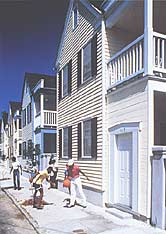
In keeping with vernacular tradition, these Charleston units front directly onto the sidewalk without any setback.
(Charleston Infill Housing)
